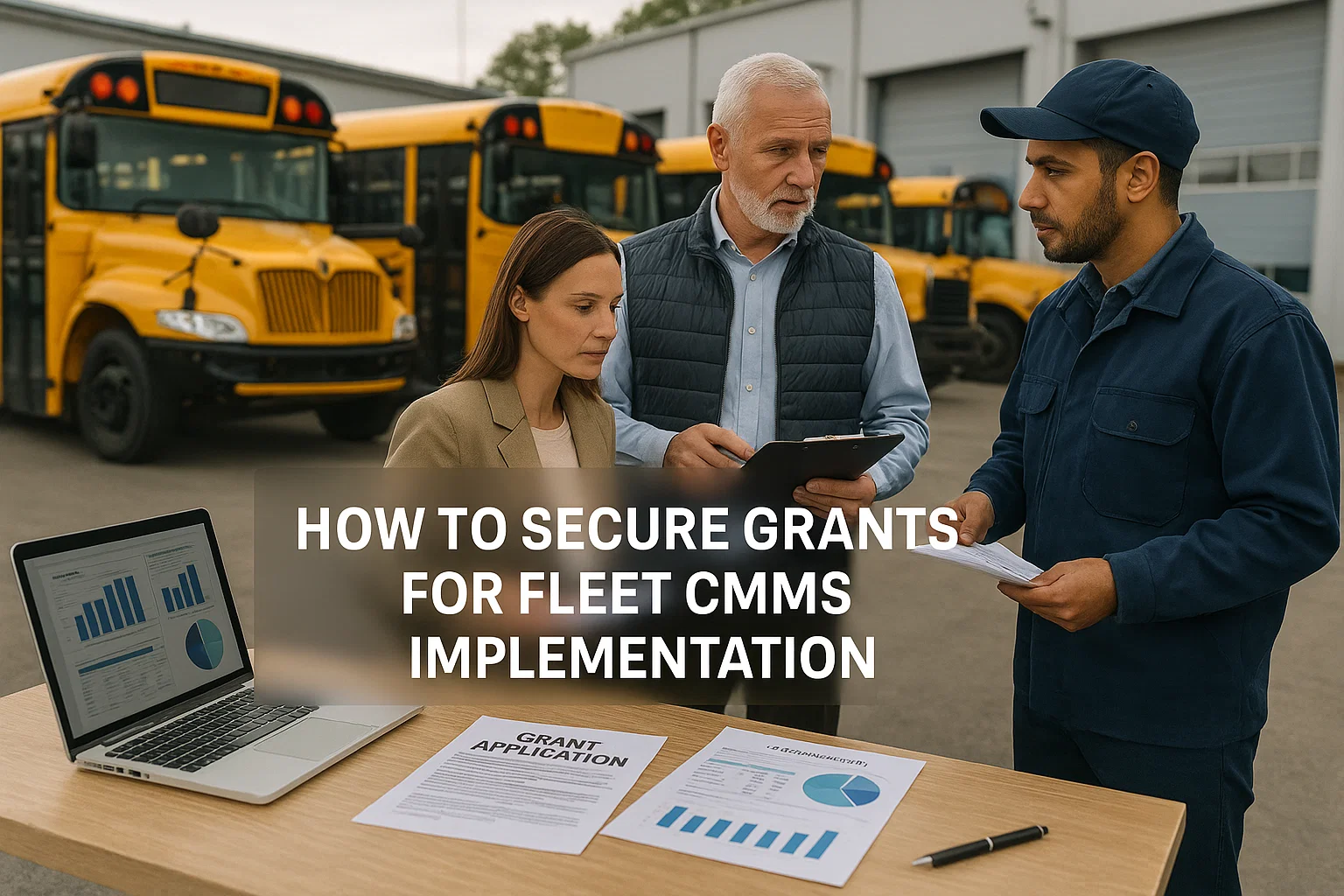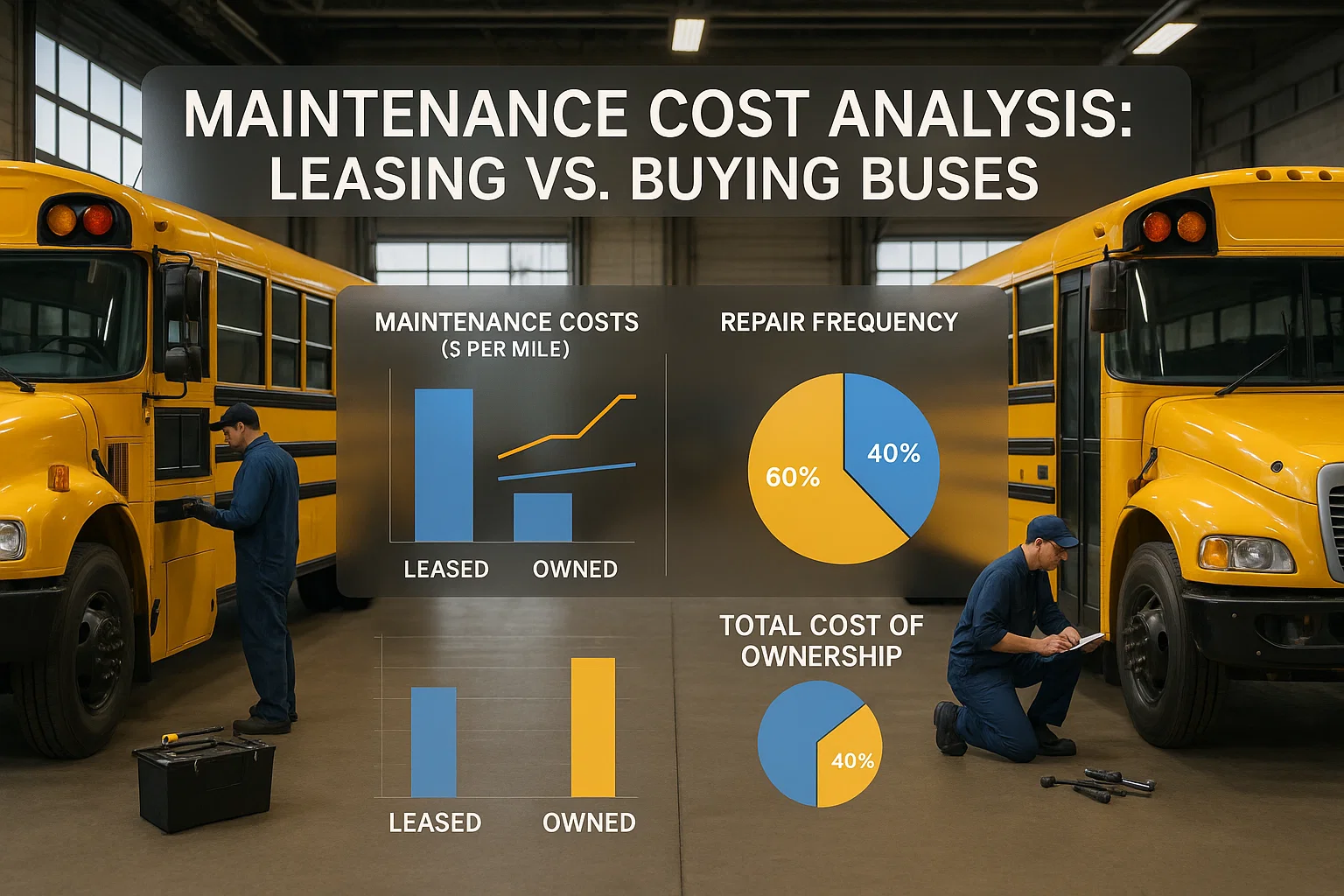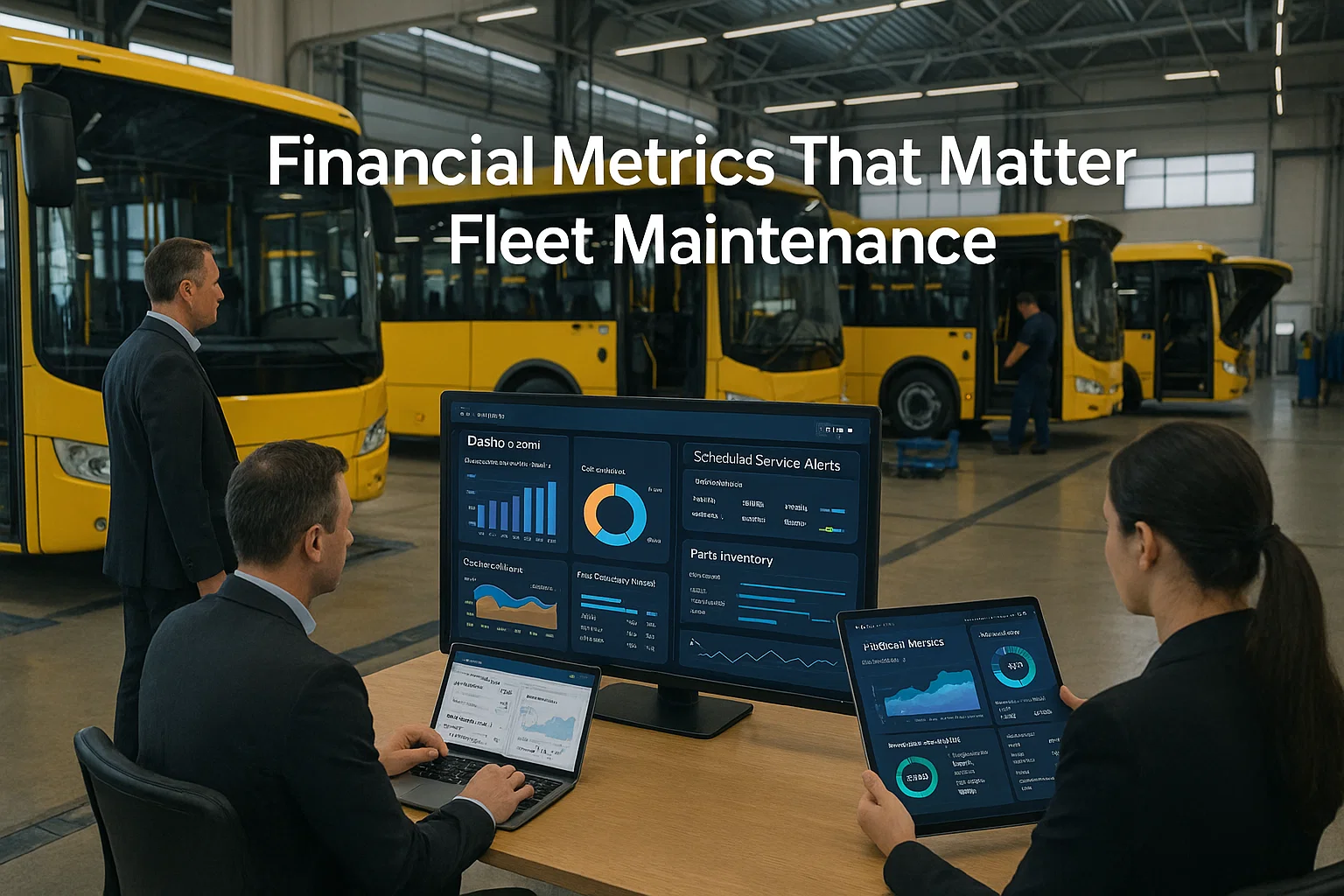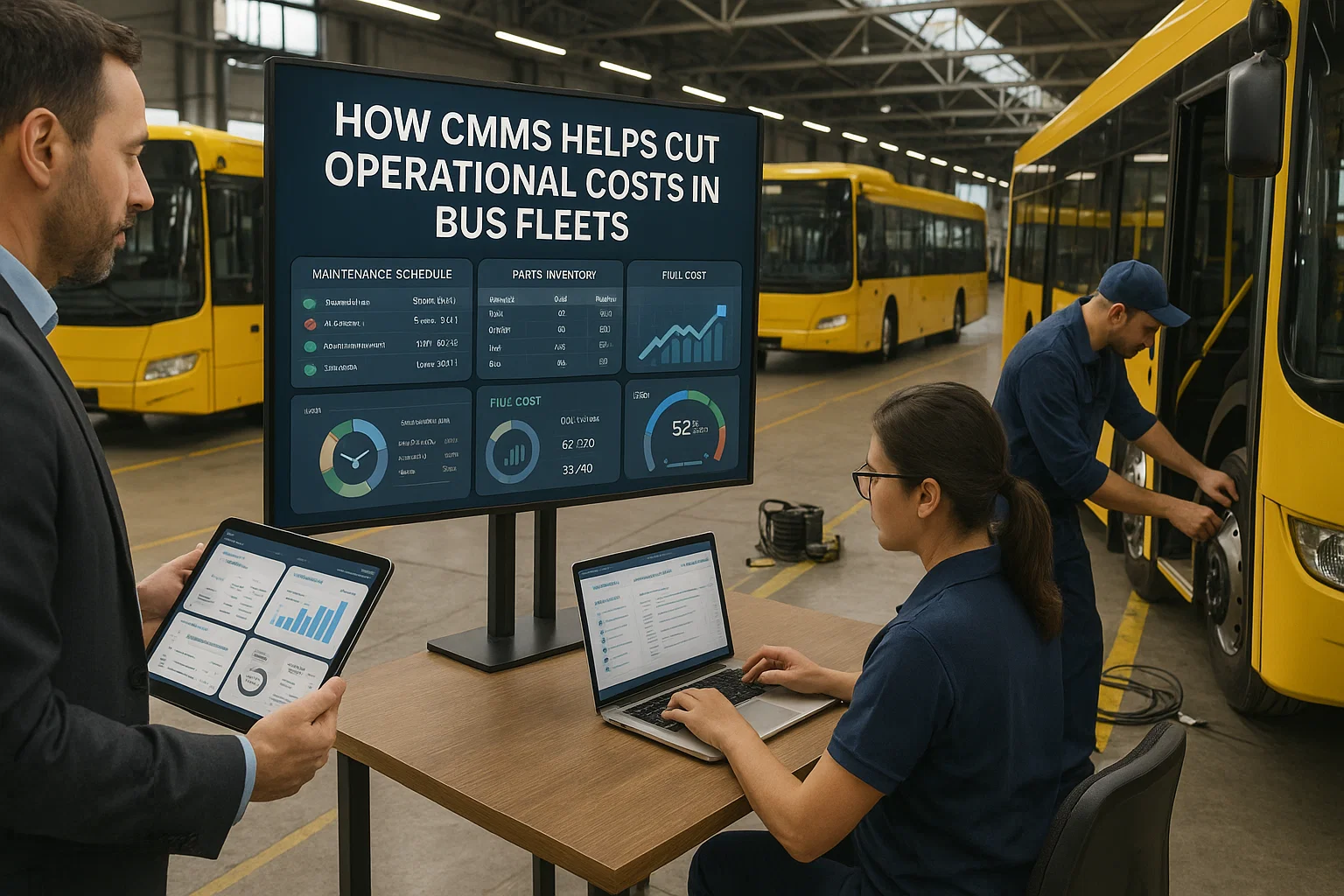In today's competitive transportation landscape, US bus fleet operators face mounting pressure to deliver reliable service while controlling operational costs. Route optimization stands as one of the most impactful strategies for achieving both objectives simultaneously.
Recent studies by the American Public Transportation Association reveal that optimized routing can reduce operational costs by up to 23% while improving on-time performance by 31%. These dramatic improvements stem from the intelligent application of data-driven route planning methodologies.
Modern fleet management platforms like Bus CMMS transform traditional route planning from a static, manual process into a dynamic, data-driven operation. By leveraging real-time analytics, historical performance data, and predictive modeling, fleet operators can create routes that maximize efficiency while meeting passenger needs.
Understanding Route Optimization Fundamentals
Effective route planning extends beyond simply connecting point A to point B. It involves sophisticated analysis of multiple variables including passenger demand patterns, traffic conditions, vehicle capacity, driver schedules, and operational constraints.
Key Optimization Factors
Passenger Demand Analysis
Understanding peak travel times, popular destinations, and seasonal variations enables routes that match actual ridership patterns
Traffic Pattern Integration
Real-time and historical traffic data helps avoid congestion and maintain schedule reliability
Resource Utilization
Optimizing vehicle and driver assignments ensures maximum productivity while maintaining service quality
Data-Driven Route Planning Strategies
Leveraging Analytics for Optimization
Modern Bus CMMS platforms collect and analyze vast amounts of operational data to identify optimization opportunities. This data-driven approach replaces guesswork with actionable insights.
- GPS Tracking Data: Real-time vehicle locations reveal actual vs. planned route performance
- Passenger Count Analytics: Automated passenger counting systems identify demand patterns and capacity utilization
- Fuel Consumption Metrics: Route-specific fuel usage data highlights inefficient segments
- On-Time Performance Records: Historical punctuality data pinpoints problematic route sections
Technology Solutions for Route Optimization
Advanced route planning requires sophisticated technology tools that can process complex data sets and generate optimized solutions. Bus CMMS integrates multiple technologies to create comprehensive route optimization capabilities.
Essential Technology Components
AI-Powered Route Algorithms
Machine learning algorithms analyze historical patterns to predict optimal routes under varying conditions
Real-Time Traffic Integration
Live traffic feeds enable dynamic route adjustments to maintain schedule adherence
Mobile Driver Applications
Connected apps provide drivers with turn-by-turn navigation and real-time route updates
Implementing Route Optimization Programs
Successful route optimization requires systematic implementation that balances technological capabilities with operational realities. Fleet operators using Bus CMMS follow proven methodologies to ensure smooth transitions.
Implementation Phases
Phase 1: Current State Analysis
Comprehensive assessment of existing routes, performance metrics, and improvement opportunities through data collection and stakeholder interviews
Phase 2: Technology Deployment
Installation of Bus CMMS route optimization modules, GPS tracking systems, and passenger counting technologies
Phase 3: Pilot Testing
Limited deployment on select routes to validate optimization strategies and refine algorithms based on real-world results
Phase 4: Full Rollout
System-wide implementation with continuous monitoring and optimization based on performance data
Measuring Operational Efficiency Gains
Route optimization delivers measurable benefits across multiple operational dimensions. Bus CMMS provides comprehensive analytics to track and quantify these improvements.
Key Performance Improvements
- Fuel Efficiency: Optimized routes reduce fuel consumption by 15-20% through shorter distances and reduced idling
- Schedule Reliability: On-time performance improvements of 25-35% through better route timing
- Vehicle Utilization: 18-22% increase in productive service hours through efficient scheduling
- Passenger Satisfaction: 40% reduction in passenger complaints related to delays and missed connections
Financial Impact of Route Optimization
Annual Cost Reduction Opportunities
Fleet operators implementing comprehensive route optimization through Bus CMMS typically achieve significant cost savings across multiple categories:
Fuel Cost Reduction
$8,000-$12,000 per vehicle annually through optimized routing and reduced deadhead miles
Maintenance Savings
$5,000-$7,000 per vehicle from reduced wear through smoother routes and fewer stop-start cycles
Labor Efficiency
$15,000-$20,000 per route annually through optimized driver schedules and reduced overtime
Overcoming Common Route Planning Challenges
While route optimization offers substantial benefits, implementation often faces challenges that require strategic solutions. Bus CMMS addresses these challenges through comprehensive features and support.
Challenge Resolution Strategies
Resistance to Change
Solution: Involve drivers and dispatchers in planning process, provide comprehensive training, and share success metrics
Data Quality Issues
Solution: Implement data validation protocols and automated quality checks within Bus CMMS
Dynamic Conditions
Solution: Deploy real-time optimization algorithms that adjust routes based on current conditions
Future of Route Optimization Technology
The evolution of route planning technology continues to accelerate, with Bus CMMS at the forefront of innovation. Emerging capabilities promise even greater efficiency gains.
Emerging Technologies
- Predictive Analytics: Advanced AI models that anticipate traffic patterns and passenger demand weeks in advance
- Autonomous Vehicle Integration: Route optimization algorithms designed for future autonomous bus fleets
- Multi-Modal Planning: Integrated optimization across bus, rail, and micro-mobility options
- Environmental Optimization: Routes designed to minimize carbon emissions and environmental impact
Frequently Asked Questions
How quickly can Bus CMMS improve route efficiency after implementation?
Bus CMMS typically delivers measurable improvements within 30-60 days of implementation. Initial gains of 10-15% in fuel efficiency and on-time performance are common, with full optimization benefits of 20-30% efficiency improvement realized within 6 months as the system learns from operational data and refines route algorithms.
What data does Bus CMMS need to optimize routes effectively?
Bus CMMS utilizes multiple data sources including GPS tracking data, passenger boarding/alighting counts, traffic pattern information, driver feedback, fuel consumption records, and schedule adherence metrics. The platform can integrate with existing data systems or begin optimization with basic route information, improving recommendations as more data becomes available.
Can Bus CMMS handle complex route scenarios like school buses or paratransit?
Yes, Bus CMMS includes specialized modules for various transit types. School bus routing considers bell times, student addresses, and capacity constraints. Paratransit optimization handles dynamic scheduling, ADA requirements, and multi-passenger trips. The platform adapts its algorithms to meet specific operational requirements while maximizing efficiency.
How does Bus CMMS route optimization reduce operational costs?
Bus CMMS reduces costs through multiple mechanisms: minimizing total miles traveled (reducing fuel and maintenance costs), optimizing driver schedules (reducing overtime), improving vehicle utilization (requiring fewer buses), and enhancing on-time performance (reducing passenger complaints and associated costs). Most fleets see ROI within 8-12 months.
Does Bus CMMS support real-time route adjustments for service disruptions?
Absolutely. Bus CMMS features real-time optimization capabilities that automatically adjust routes based on traffic conditions, vehicle breakdowns, or other disruptions. The system can reroute vehicles, notify passengers of changes, and update driver instructions instantly, maintaining service quality despite unexpected challenges.
Conclusion
Route optimization represents a critical opportunity for US bus fleet operators to enhance operational efficiency while improving service quality. The combination of advanced analytics, real-time data, and intelligent algorithms makes previously impossible optimization levels achievable.
Success in route optimization requires commitment to data-driven decision making, investment in appropriate technology, and willingness to evolve traditional practices. Bus CMMS provides the comprehensive platform needed to transform route planning from a constraint into a competitive advantage.
As transportation demands continue to evolve and operational pressures intensify, route optimization becomes not just beneficial but essential. Fleet operators who embrace these capabilities position themselves for sustainable success in an increasingly competitive market.
Ready to Improve Route Planning for Greater Operational Efficiency?
Discover how Bus CMMS can transform your route planning and deliver measurable efficiency improvements.








